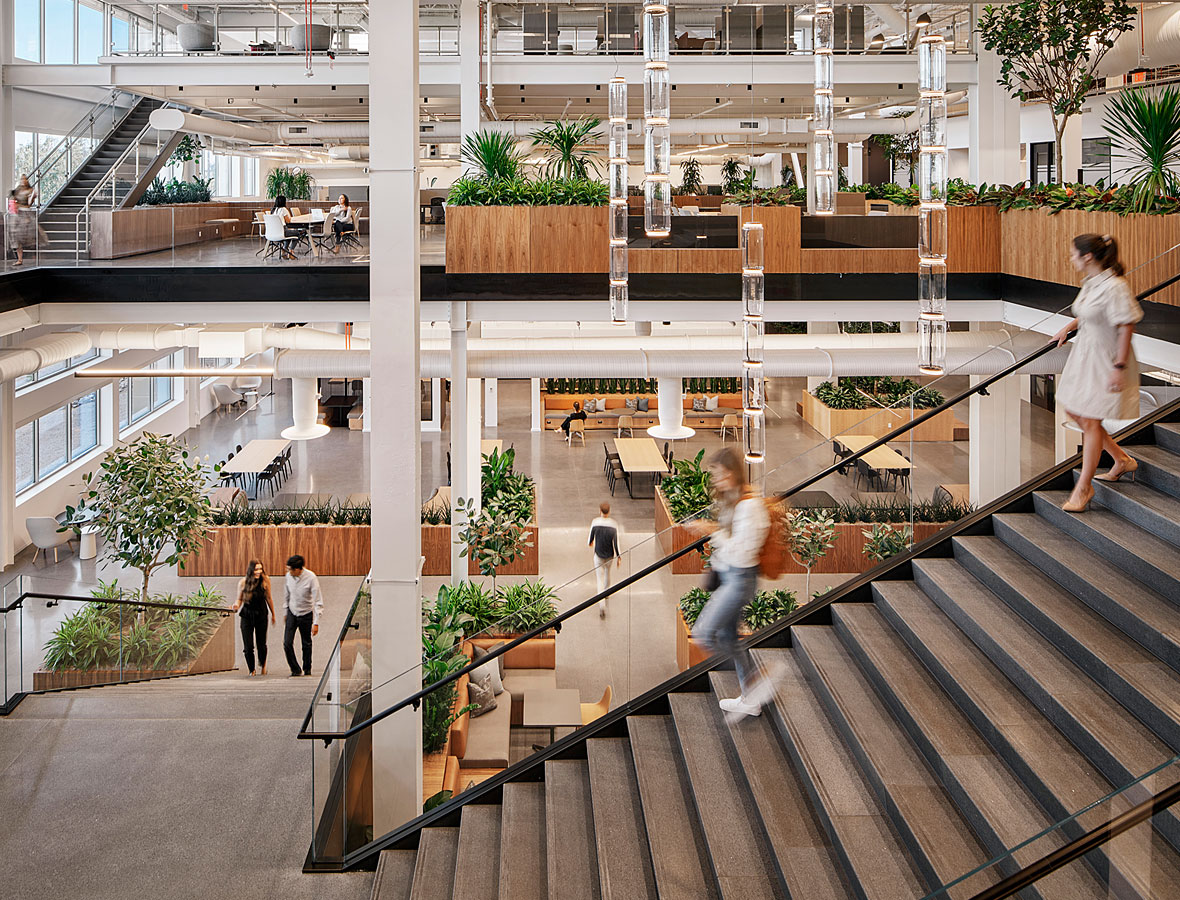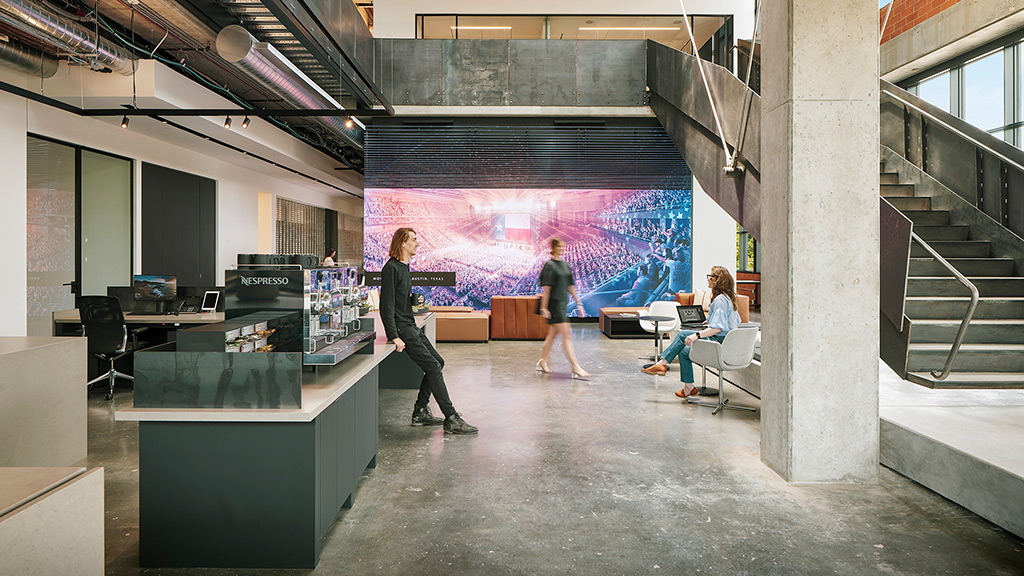A Future Vision of Workplace Metrics
September 12, 2022 | By Dr. Mike O'Neill
People-centric workplace design is changing the definition of workplace performance
Today, the lingering health risks of the pandemic and employees’ recent experience with the autonomy of remote work is driving demand for a hybrid work experience that supports work-life balance, well-being and even mental health. The workplace can also be a resource for employees to access their professional networks to enhance problem-solving, and specialized spaces and technologies for work tasks. Today, leaders realize the workplace also needs to engage people and connect them to the organization. Even the fate of central business districts (CBD’s) and neighborhoods is being affected by this shift to hybrid work. Clearly, the post-pandemic return to office will be more than simply “bringing people back.” Today, workplace is uniquely positioned as a resource to support “people-centric” issues related to both employee – and organizational effectiveness.
In 1974, 90% of the economic value of business were tangible assets like machines, factories, natural resources, and other fixed assets. Now (as of 2020), 90% of S&P 500 equity is tied to intangible intellectual assets (patents, copyrights, trade secrets, etc.) created by employees.
Further, it has long been established that the spend on the building and workplace represents only a fraction of an organization’s costs when compared to people costs – i.e., annual compensation and benefits. Since people are a businesses’ most expensive asset, then organizations should invest in workplace designs that improve the financial value of the intangible assets that people create.
New sources of data and analytic tools will help us innovate our understanding of workplace performance
These facts strengthen the notion that a people-centric approach to workplace design is desirable from both the needs of employees, and from a business or economic perspective. This people-centric approach is driving a need to access and use different types of data and analytics to assess, and even predict, workplace performance. In parallel, for the first time, troves of new types of data and analytic tools for workplace research and strategy efforts are available. Used properly and guided by theory, data science platforms and tools (such as machine learning) can help us innovate analytics to reveal truths about how to make effective workplaces that were not before possible.
From space metrics to people outcomes
The nature of the data used to track office performance has always included descriptive statistics on objective features of space, such as usable/rentable square footage, cost per square foot, space utilization, features and furnishings, amenities, and others. Many of these relate to cost of space. While surveys are frequently used to improve design by gathering occupants’ evaluation of spatial features and characteristics, this input is still sometimes overridden by the “space centric” point of view in which space utilization and cost targets drive office design decisions.
In addition to spatial metrics and survey evaluations, we now seek to assess design success for a “people-centric” workplace, using organizational outcomes as workplace performance KPIs. These could include business outcomes (such as market value, or patents issued), enterprise performance (employee engagement and retention), sustainability (energy use/carbon footprint, space utilization), well-being (employee mental-health and resilience), and social equity (diversity and inclusion). These latter two outcomes are also related to Environmental, Social and Governance (ESG) guidelines, and the implication is that many of these outcomes can be directly or indirectly influenced by aspects of workplace design.
From a limited, to a wide range of data sources
In workplace evaluation, most data are from occupant satisfaction and functional requirements surveys, behavioral observations of space utilization, and facility data (usable square footage, rent per square foot, etc.). But a much broader range of features also impact occupant well-being, satisfaction, performance, and even organizational and business outcomes. Such sources of data could include indoor air quality and lighting levels, aspects of planning model (for instance, proportion of individual work points to meeting room seats) building energy use and carbon footprint and application of Fitwel, LEED or WELL building standards.

These are characteristics of the workplace and building. But buildings and their occupants exist in a larger geographic and societal context. So other potential sources of data could include neighborhood livability data for the building site and for areas where employees reside (demographics, crime, median income, access to education, social involvement, obesity, air quality, local pollution, housing costs, transportation access to jobs, neighborhood net-promoter scores and many others). And this wider scope of data types includes outcome metrics related to workforce (for example, retention) and business outcomes (IP generation, new patents, revenue per employee, customer retention).
From snapshot in time to continuous measurement
New sources of streaming workplace data present opportunities for continuous measurement over long periods of time, whether for real-time or historical analysis. Examples include digital video, speech, behavioral space utilization data from sensors, indoor air quality (humidity, PM, VOCs) and lighting data from building control systems. Other sources of continuous data can be derived from online space reservation apps, badge entry data and geofencing (which can confirm when employees enter and exit the building). These can augment existing sources of workplace insights, such as survey data, which are a “snapshot,” representing a single point in time through discrete, ordinal data points.
The sheer volume and granularity of continuous data presents challenges for analysis when using conventional statistical tools. Existing statistical analysis techniques are not designed to accommodate large volumes from this type of data. These data can also be “high-dimension,” defined as data in which a large number of features (variables) each have only a few data points. In workplace research, especially surveys, the opposite is true, a relatively small number of survey questions (variables) each with many observations (question responses). However, these sources, whether high or low dimensional, represent an important opportunity for Machine Learning tools to further the science of workplace analytics and apply findings to improve workplace performance.
From rearview mirror to forecasting
Most workplace data sources capture a moment in time, and when analyzed, represent a description of past conditions not current or future conditions. New workplace analytics can augment these important “rear-view mirror” observations with data and statistical models that can forecast or predict future outcomes. This presents the opportunity to model hypothetical scenarios, such as the impact of site location or workplace design features on workforce or business outcomes. This shift to predictive analytics will offer a valuable tool for designers, building owners and occupiers who want to improve the quality of design for offices still in the planning stages. Predictive tools can be used as a form of risk management to protect the investment in workspace by simulation of future outcomes.
From description to explanation
Most workplace assessments use descriptive statistics, often relating results in the form of percentages or counts. This form of analysis is entirely appropriate for a design or business consumer. However, there can be additional value from this data. These statistics describe, but do not explain an outcome. With the right research design and analysis, it is possible to explain an outcome by identifying the factors that influence it. Like forecasting, such analyses can inform decision-making related to design, provide proof statements to management on design success, and bolster confidence going beyond descriptive statistics.
In the professional world of applied workplace research, predictive or explanatory analytics are used much less often than descriptive measures. This may be due to several factors, one being the difficulty of implementing a field research design within a business context that enables this type of analysis. And the results of such an analysis are more difficult to explain to a business consumer who is more familiar with descriptive statistics. With the right research approach and with clear communication these are not insurmountable issues. Explanatory approaches to workplace research represent a powerful opportunity to elevate the impact of research insights to improve the quality of business decisions and to provide evidence for the positive impact of workspace on people outcomes.
Machine Learning and AI on the horizon
These are only the first steps towards a total transformation in the way we use workplace data to inform our designs. Looking further into the future, AI tools like Machine Learning will unlock deeper insights from our workplace performance data. In the coming weeks, we'll delve further into the future opportunities for insights that Machine Learning tools can unlock, and how they can begin to fit into the larger work ecosystem of measuring workplaces, buildings, neighborhoods, and cities.
For media inquiries, email .
